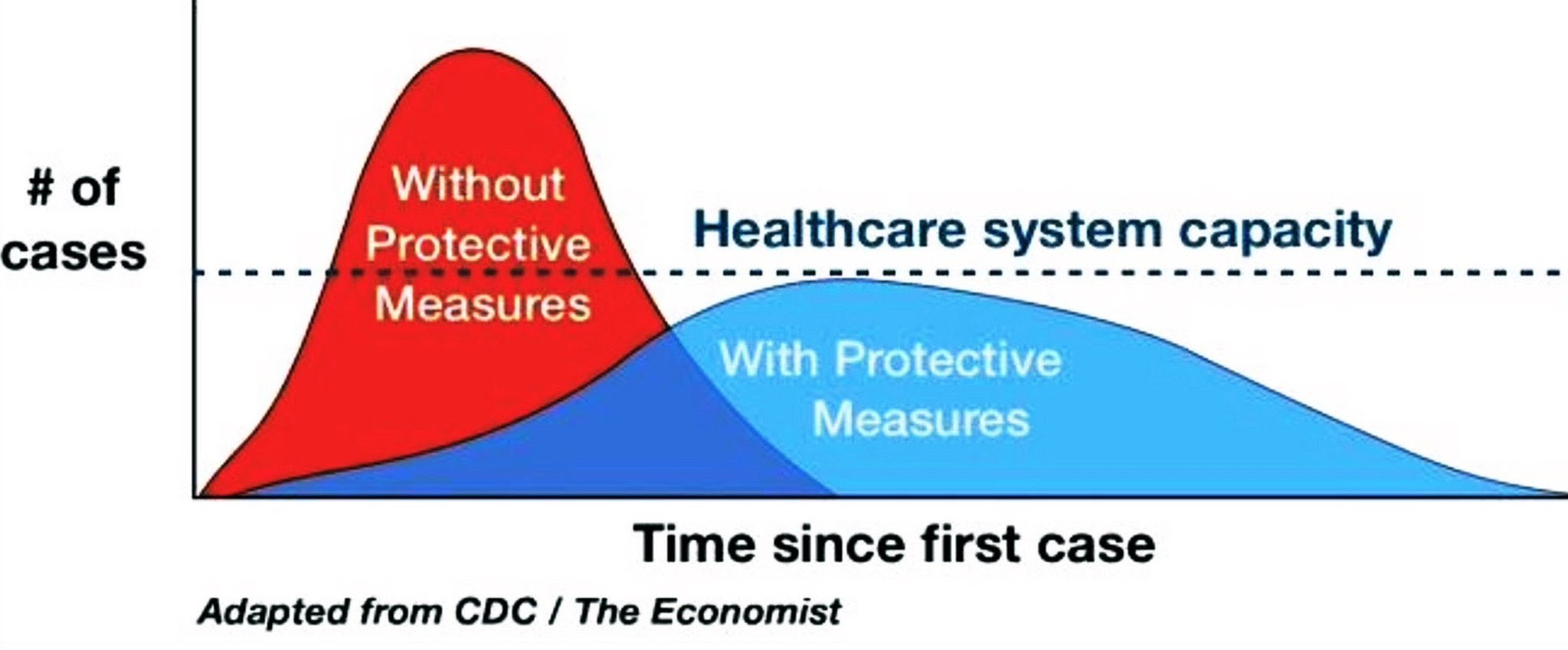Let’s trade some privacy for a flatter curve
Unchecked, the novel corona virus spreads rapidly and has shown to quickly overwhelm even one of the best healthcare systems in the world. As explained in this blog post:
We need to flatten the curve
This is extremely important, because if we can slow down the rate of infection in a community, then we give hospitals in that community time to deal with both the infected patients, and with the regular patient load that they need to handle. This is described as “flattening the curve”, and is clearly shown in this illustrative chart:
We just don’t have enough critical care facilities to handle the sick. For the US, quoting from the same blog:
Here’s what the math might look like, according to Liz Specht: The US has about 2.8 hospital beds per 1000 people. With a population of 330M, this is ~1M beds. At any given time, 65% of those beds are already occupied. That leaves about 330k beds available nationwide (perhaps a bit fewer this time of year with regular flu season, etc). Let’s trust Italy’s numbers and assume that about 10% of cases are serious enough to require hospitalization. (Keep in mind that for many patients, hospitalization lasts for weeks — in other words, turnover will be very slow as beds fill with COVID19 patients). By this estimate, by about May 8th, all open hospital beds in the US will be filled. (This says nothing, of course, about whether these beds are suitable for isolation of patients with a highly infectious virus.) If we’re wrong by a factor of two regarding the fraction of severe cases, that only changes the timeline of bed saturation by 6 days in either direction. If 20% of cases require hospitalization, we run out of beds by ~May 2nd If only 5% of cases require it, we can make it until ~May 14th. 2.5% gets us to May 20th. This, of course, assumes that there is no uptick in demand for beds from other (non-COVID19) causes, which seems like a dubious assumption. As healthcare system becomes increasingly burdened, Rx shortages, etc, people w/ chronic conditions that are normally well-managed may find themselves slipping into severe states of medical distress requiring intensive care & hospitalization.
India has just about 70-100k ICU beds for 1.3B population. Whe MUST flatten the curve!
How can we flatten the curve?
There are many actions that can help in reducing the infection rate like cleaning hands, social distancing and of course complete lockdowns.
In absence of a complete lockdown, quarantining individuals who have tested +ve, and also all their recent contacts is the most straightforward way to contain the disease. Korea is doing this very effectively. The way it works is:
- Test: test everyone with symptoms and also people who have come in close contact with +ve cases.
- Trace: when person tests positive, everyone who was in close proximity to that person in the recent past is identified and tested.
- Treat: home quarantine and if the person in vulnerable category alert the
The strategy is also recommended by WHO.
Can we do better?
Tracing can be significantly improved with most of us having a simple app that tracks location - using the GPS, Bluetooth and WiFi signals. This location information can then be pushed to a server. The moment someone tests +ve, everyone who have come in contact can be alerted, and tested. Note: The app need not have to be installed on every phone for the strategy to be effective, the more people have it the flatter the curve.
Humans will survive this pandemic. Whether humanity survives or not depends on our actions - how we take care of the economically vulnerable; and how we fight for the physically vulnerable.
Extraordinary times call for an extraordinary response. Let us volunteer this info so we can flatten the curve.
Singapore has an app for this.
Edits: Added note regarding install coverage and effectiveness.
